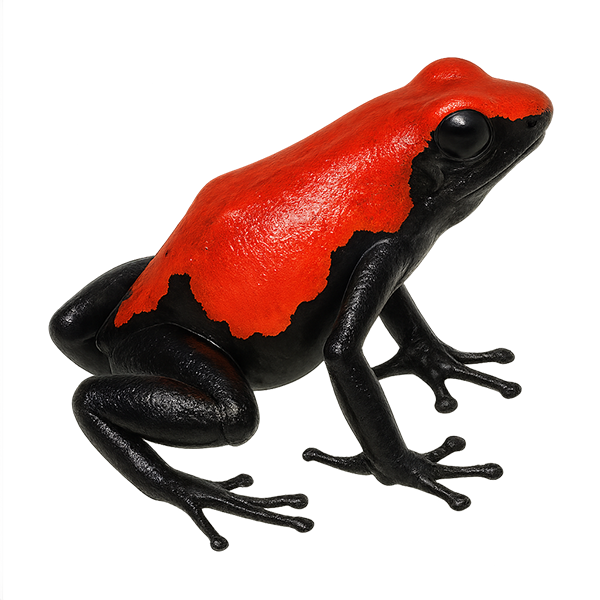Your wildlife photography guide.
Explore the splash-backed poison frog in detail, study its behavior, prepare your shots.
Where to observe and photograph the splash-backed poison frog in the wild
Learn where and when to spot the splash-backed poison frog in the wild, how to identify the species based on distinctive features, and what natural environments it inhabits. The WildlifePhotographer app offers tailored photography tips that reflect the splash-backed poison frog’s behavior, helping you capture better wildlife images. Explore the full species profile for key information including description, habitat, active periods, and approach techniques.
Splash-backed Poison Frog
Scientific name: Adelphobates galactonotus

IUCN Status: Near Threatened
Family: DENDROBATIDAE
Group: Amphibians
Sensitivity to human approach: Suspicious
Minimum approach distance: 2 m
Reproduction period: December to January
Incubation: 10–14 jours
Births: January to February
Habitat:
Humid tropical forests, undergrowth, swampy areas
Activity period :
Primarily active during the day, with peak activity in the morning and late afternoon.
Identification and description:
The Splash-backed Poison Frog, Adelphobates galactonotus, is a small, brightly colored frog native to the humid tropical forests of Brazil. Known for its striking skin, which can range from yellow to bright red, it serves as a warning to potential predators of its toxicity. This species typically measures between 3 and 4 cm in length. It primarily inhabits the forest floor but can also climb low vegetation. Its diet mainly consists of small insects and other invertebrates. Although its population is currently stable, it is threatened by deforestation and habitat loss.
Recommended lens:
Macro – adjust based on distance, desired framing (portrait or habitat), and approach conditions.
Photography tips:
To photograph the Splash-backed Poison Frog, it is advisable to use a macro lens to capture the details of its colorful skin. Look for it early in the morning when the natural light is soft, which will highlight its bright colors. Be patient and discreet, as this species can be suspicious. Avoid touching or disturbing the animal, as it is toxic. Use a tripod for stable shots and remember to check the ISO settings to compensate for the low light under the canopy.
The WildlifePhotographer App is coming soon!
Be the first to explore the best nature spots, track rutting seasons, log your observations, and observe more wildlife.
Already 1 431 wildlife lovers subscribed worldwide

